How To Start Fittonia Albivenis, Nerve Plant
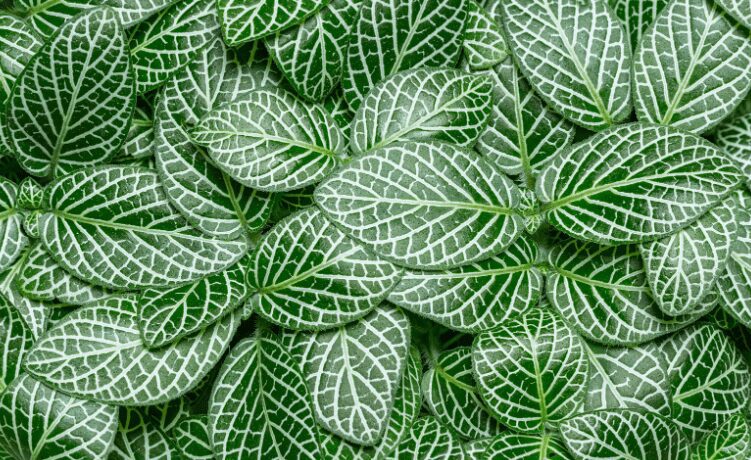
Fittonia albivenis cultivars sneak on the ground and thrive to show that beauty isn’t about height or size. They have leaves that are absolutely captivating with their cheery hues of green and red offering a joyful air to the place.
Plant Fact
A native of the tropical rainforest in Peru and Columbia, F. albivenis is appreciated for its ornamental leaves. There are about 15 species of Fittonia and they belong to the Acanthus family, Acanthaceae.
The genus epithet, Fittonia is named after Irish discoverers, Elizabeth and Sarah Mary Fitton, who authored the Conservations On Botany which was published in 1817. The species epithet albivenis means white-veined in Latin.
F. albivenis emerges as a short, lush, and compact shrub. The creeping evergreen perennial grows to 15cm high only and spreads to 30cm wide or more.
Its small, oval-shaped, and colored leaves grow opposite of one another along its trailing fleshy and hairy stems.
The tiny blooms of F. albivenis are yellowish-white, tubular, and two-lipped. They appear from the slender spike inflorescence with overlapping green bracts. Though not conspicuous, they look lovely when viewed close-up.
Varieties of Nerve Plant
The Nerve or Mosaic plant has lush green ovate leaves with accented veins of white to deep pink to red
- ‘Argyroneura’: Deep-green leaves with silver-white veins
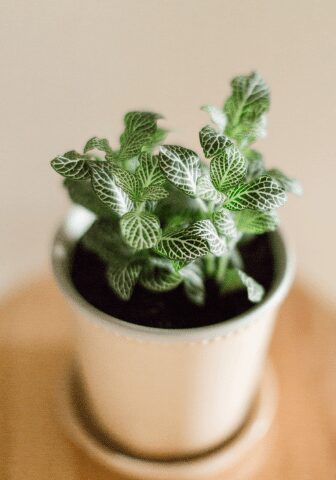
- ‘Pearcei’: Deep-green leaves and reddish veins
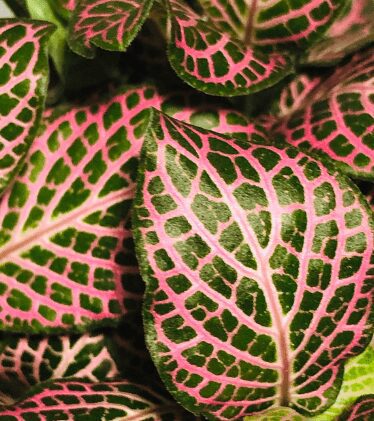
- ‘Frankie’: Light pink and green leaves
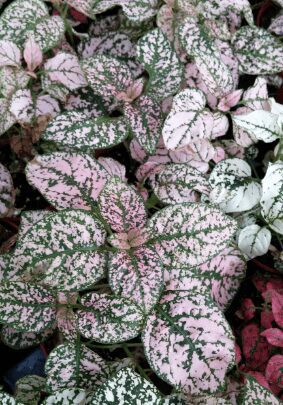
- ‘Fortissimo’: Green foliage and red and pink veins
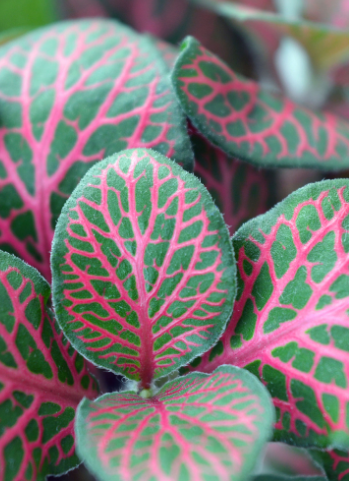
- ‘Red Star’: Boasts bright and cheery pink-red veined leaves
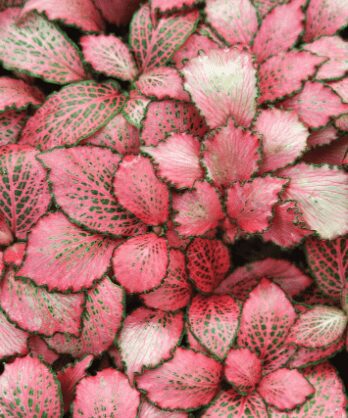
Alluring Leaves
The surface of the leaves has very striking and contrasting mosaic-like, vein-like or net-like patterns.
That is why F. albivenis is commonly known as nerve plant, mosaic plant, snakeskin plant, silver net plant, painted net plant, and lace leaf plant.
The leaves are about five cm long. Dwarf-leaved cultivars however have leaves that are smaller in size. They are often green with veins like capillaries forming an irregular network in white, red, or pink.
The white-veined ones are categorized into the Argyroneura group. The other cultivars, belonging to the Verschaffeltii group, showcase red or pink veins.
Different cultivars display different veining styles. Some sport very little green. Also, the leaf edges can be smooth, serrated, or wavy.
How To Grow Fittonia Albivenis
Since F. albivenis originates from the warm and humid regions of South America, the shrub will thrive here just as well.
Only thing is that you have to pay extra attention to its requirements. The plant can be finicky.
Do not over-water the plant as it can rot easily. Grow F. albivenis in containers or hanging pots to display its attractive leaves.
Pick or mix a few hues together in a pot for an interesting arrangement to brighten up a dull nook of the garden or home.
This small prostrate shrub will cover, and slowly spill over the pots with its spreading and low-growing habit.
One rather peculiar trait about this plant is that when it dries out and collapses, it can quickly bounce back to life after a thorough watering.
Terrarium Growing Fittonia Albivenis
A terrarium would be the ideal container for the nerve plant. It requires high humidity, typically a problem during the winter heating months.
Terrariums are relatively easy to construct and considered low-maintenance.
One of the easiest ways to make a terrarium is to use a small fish tank and cover the top with a sheet of glass or Plexiglas.
Such a container is straightforward to work with because the top can easily be removed, providing total ac- cess to the container.
It is undoubtedly a piece of cake compared to working with a narrow-necked bottle with a small opening.
Nerve plants are not easy to grow. They do well in the 60-degree range and have low light and high humidity requirements. Watering can be tricky because too much water will cause the stems to rot.
A lack of moisture causes the leaves to curl up and drop off the plant. Thus, the terrarium is the ideal container for this beautiful foliage plant.
Of all places, many drugstores often sell nerve plants because they are impulse buy. People see them and cannot resist bringing home a cute little plant.
Media: Use any regular and well-draining potting mix. Add a handful of peat moss or compost to the mix if it doesn’t already have them.
Light: Place the plant in the bright shade.
Pot: Choose a small pot for F. albivenis to settle into as the plant has shallow roots. Also, ensure that there are drainage holes for water to drain off freely.
Watering: Keep soil moist, but not soggy by watering the plant thoroughly on good sunny days. Water sparingly during wet spells.
Feeding: Apply any slow-release balanced fertilizer. When cared for well, the leaves are thick and stiff.
Maintenance: Discard the stem tips regularly and the green flower spikes, if any, for the shrub to grow bushier and more compact. You can also add lushness by pinning back leggy soft-wooded stolons back to the soil of the pot.
Propagation: Use its divisions or stem cuttings.
Tips On Fittonia
It would be difficult for the plant to thrive permanently inside the home unless the place is as warm, moist, and bright as the outside.
When growing F. Albivenis as a houseplant, remember to bring the plant to the bright shade to recuperate as often as possible.






















